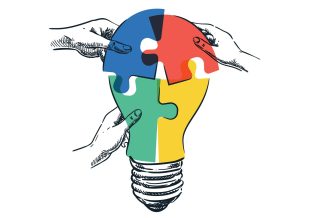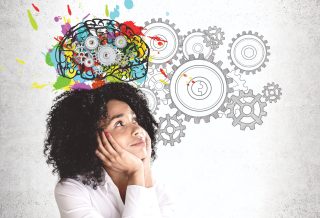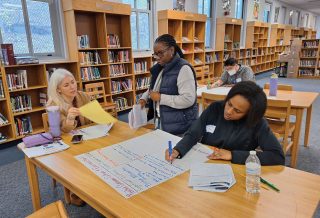FOCUS
Students on the margins
Coaching for engagement and achievement
By Jim Knight
Categories: Coaching, Learning designs, Reaching all students, Social & emotional learningDecember 2019
Vol. 40, No. 6
Read the remaining content with membership access. Join or log in below to continue.
Sed ut perspiciatis unde omnis iste natus error sit voluptatem accusantium doloremque laudantium, totam rem aperiam, eaque ipsa quae ab illo inventore veritatis et quasi architecto beatae vitae dicta sunt explicabo. Nemo enim ipsam voluptatem quia voluptas sit aspernatur aut odit aut fugit, sed quia consequuntur magni dolores eos qui ratione voluptatem sequi nesciunt. Neque porro quisquam est, qui dolorem ipsum quia dolor sit amet, consectetur, adipisci velit, sed quia non numquam eius modi tempora incidunt ut labore et dolore magnam aliquam quaerat voluptatem.
To learn more
For more information on the research supporting the claims in this article, visit instructionalcoaching.com/research.
References
Centers for Disease Control and Prevention. (2009). Fostering school connectedness. Available at www.cdc.gov/healthyyouth/protective/pdf/connectedness_administrators.pdf.
Finn, J.D. (1993). School engagement and students at risk. Washington, DC: National Center for Education Statistics.
Finn, J.D. & Rock, D.A. (1997). Academic success among students at risk of school failure. Journal of Applied Psychology, 82(2), 221-234.
Knesting, K. (2008). Students at risk for school dropout: Supporting their persistence. Preventing School Failure: Alternative Education for Children and Youth, 52(4), 3-10.
Knight, J. (2013). High-impact instruction: A framework for great teaching. Thousand Oaks, CA: Corwin.
Knight, J. (2018). The impact cycle: What instructional coaches should do to foster powerful improvements in teaching. Thousand Oaks, CA: Corwin.
Knight, D., Hock, M., Skrtic, T.M., Bradley, B.A., & Knight, J. (2018). Evaluation of video-based instructional coaching for middle school teachers: Evidence from a multiple-baseline study. The Educational Forum, 76, 50-51.
Knight, J., Hoffman, A., Harris, M., & Thomas, S. (in press). The instructional playbook: The missing link for translating research into practice. Lawrence, KS: One Fine Bird Press.
Quaglia, R. & Corso, M.J. (2014). Student voice: The instrument of change. Thousand Oaks, CA: Corwin.
Schlechty, P. (2011). Engaging students: The next level of working on work. San Francisco, CA: Jossey-Bass.
van Nieuwerburgh, C. (2017). An introduction to coaching skills: A practical guide (2nd ed.). Thousand Oaks, CA: Sage Publications.
Whitmore, J. (2017). Coaching for performance: The principles and practice of coaching and leadership (5th ed.). Boston, MA: Nicholas Brealey Publishing.

Jim Knight, senior partner of Instructional Coaching Group, is a research associate at the University of Kansas Center for Research on Learning. He has spent more than two decades studying instructional coaching, writing several books on the topic. Knight also leads the Intensive Instructional Coaching Institutes and the Teaching Learning Coaching annual conference. Knight has presented and consulted in more than 40 states, most Canadian provinces, and around the world. He has also won several university teaching, innovation, and service awards.
Categories: Coaching, Learning designs, Reaching all students, Social & emotional learning
Recent Issues
NAVIGATING NEW ROLES
April 2025
Whether you’re new to your role or supporting others who are new,...
LEARNING DESIGNS
February 2025
How we learn influences what we learn. This issue shares essential...
BUILDING BRIDGES
December 2024
Students benefit when educators bridge the continuum of professional...
CURRICULUM-BASED PROFESSIONAL LEARNING
October 2024
High-quality curriculum requires skilled educators to put it into...











